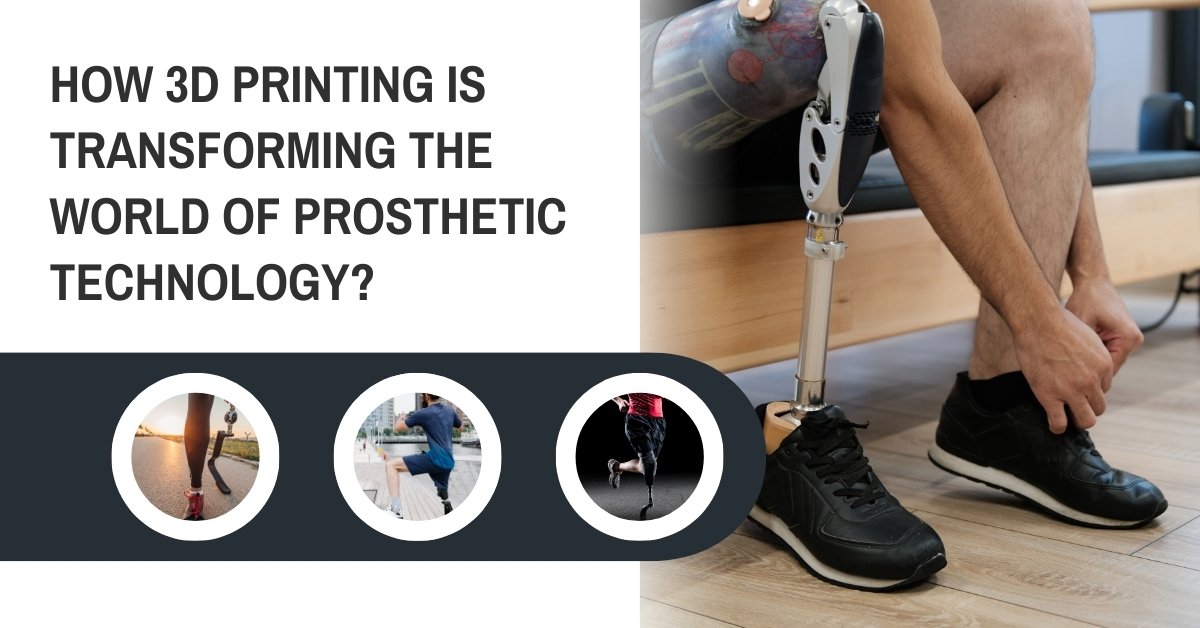
Technology has advanced rapidly in recent years, bringing remarkable improvements to healthcare, particularly in prosthetics. One groundbreaking innovation is 3D printing, a process that builds objects layer by layer. This cutting-edge technology has transformed prosthetic design, making it more customized, affordable, and efficient than ever before. In this article, we’ll explore the role of 3D printing in prosthetics, its advantages, how it’s changing the industry, and what the future holds.
How is 3D Printing Used in Prosthetics?
3D printing helps create prosthetic limbs that perfectly fit each person’s unique body shape and needs. Here’s how it works:
Customization: A patient’s limb is scanned using 3D imaging technology. The scan is then used to create a digital model that precisely matches the body’s shape.
Fast Production: Traditional prosthetics can take weeks or months to manufacture. 3D printing speeds up the process, allowing prosthetics to be produced within days.
Complex Designs: Unlike conventional methods, 3D printing can create intricate, lightweight, and durable structures that would otherwise be difficult or costly to produce.
Cost-Effective: 3D printing reduces waste and eliminates the need for expensive molds or tools, making prosthetics more affordable and accessible.
What Are the Benefits of 3D-Printed Prosthetics?
Switching to 3D printing for prosthetics offers many advantages that enhance both the quality of the devices and the user experience:
1. Custom Fit and Comfort
By using digital scanning and modeling, each prosthetic is tailored to the individual’s body. This ensures a better fit, reduces discomfort, and minimizes skin irritation.
2. Affordability
Traditional prosthetics require expensive materials and time-consuming labor. 3D printing cuts down production costs by minimizing waste and accelerating the manufacturing process.
3. Faster Production
The ability to go from a digital design to a finished product in just a few days is a game-changer. It allows for quick modifications and improvements based on user feedback.
4. Innovative and Lightweight Designs
3D printing enables designers to create unique features such as internal lattice structures, which reduce weight while maintaining strength. This makes prosthetics both functional and visually appealing.
5. Easy Adaptability
Since 3D-printed prosthetics can be adjusted or modified easily, users can get updated versions as their needs change. This ensures long-term comfort and improved performance.
How is 3D Printing Transforming the Prosthetics Industry?
3D printing is not just a new manufacturing method—it is reshaping the entire prosthetics industry:
1. Enhanced Personalization
Custom-fit prosthetics improve comfort and functionality, reducing the risk of skin sores or misalignment issues common with standard prosthetics.
2. Faster Production Times
Patients no longer have to wait for weeks to receive their prosthetics. The rapid turnaround time is particularly beneficial for children who quickly outgrow their prosthetic limbs.
3. Lower Costs, Greater Accessibility
Because 3D printing reduces manufacturing expenses, more people—especially in low-income areas—can access high-quality prosthetics at an affordable price.
4. Advanced Design Options
Designers can now explore new ideas and create prosthetics that are not only functional but also personalized in style and features.
5. Continuous Improvement Through Feedback
The rapid prototyping cycle allows for continuous refinement. Designers can gather feedback from users, make necessary adjustments, and produce updated versions of the prosthetic quickly. This ongoing improvement process ensures that the devices keep evolving to meet users’ changing needs.
What’s the Future of 3D-Printed Prosthetics?
The future of 3D printing in prosthetics looks bright, with many exciting developments ahead:
1. Higher Levels of Personalization
As scanning and design technology advances, prosthetics will become even more precise and adaptable to users’ needs.
2. Smart Prosthetics
With the integration of sensors, AI, and robotics, future prosthetics may predict movements, adapt to different environments, and connect with other smart devices for seamless functionality. For those in need of customized prosthetic solutions, consulting a prosthetic legs manufacturer in Mumbai can help ensure access to high-quality, personalized prosthetics.
3. Advanced Materials
New materials that are lighter, stronger, and more skin-friendly will improve durability and comfort.
4. Increased Global Impact
As 3D printing becomes more accessible, prosthetic solutions will reach areas where traditional manufacturing is not feasible, improving lives worldwide.
5. Collaboration and Innovation
The rise of open-source designs and global collaboration between researchers, engineers, and medical professionals will accelerate advancements in 3D-printed prosthetics.
Overview: 3D Printing is Revolutionizing Prosthetics
3D printing is transforming the way prosthetics are made by enabling custom designs, faster production, and lower costs. This technology is making prosthetics more accessible, comfortable, and effective. With continuous advancements, the future holds even more innovative, adaptable, and smart prosthetic solutions that will improve the quality of life for millions worldwide.


